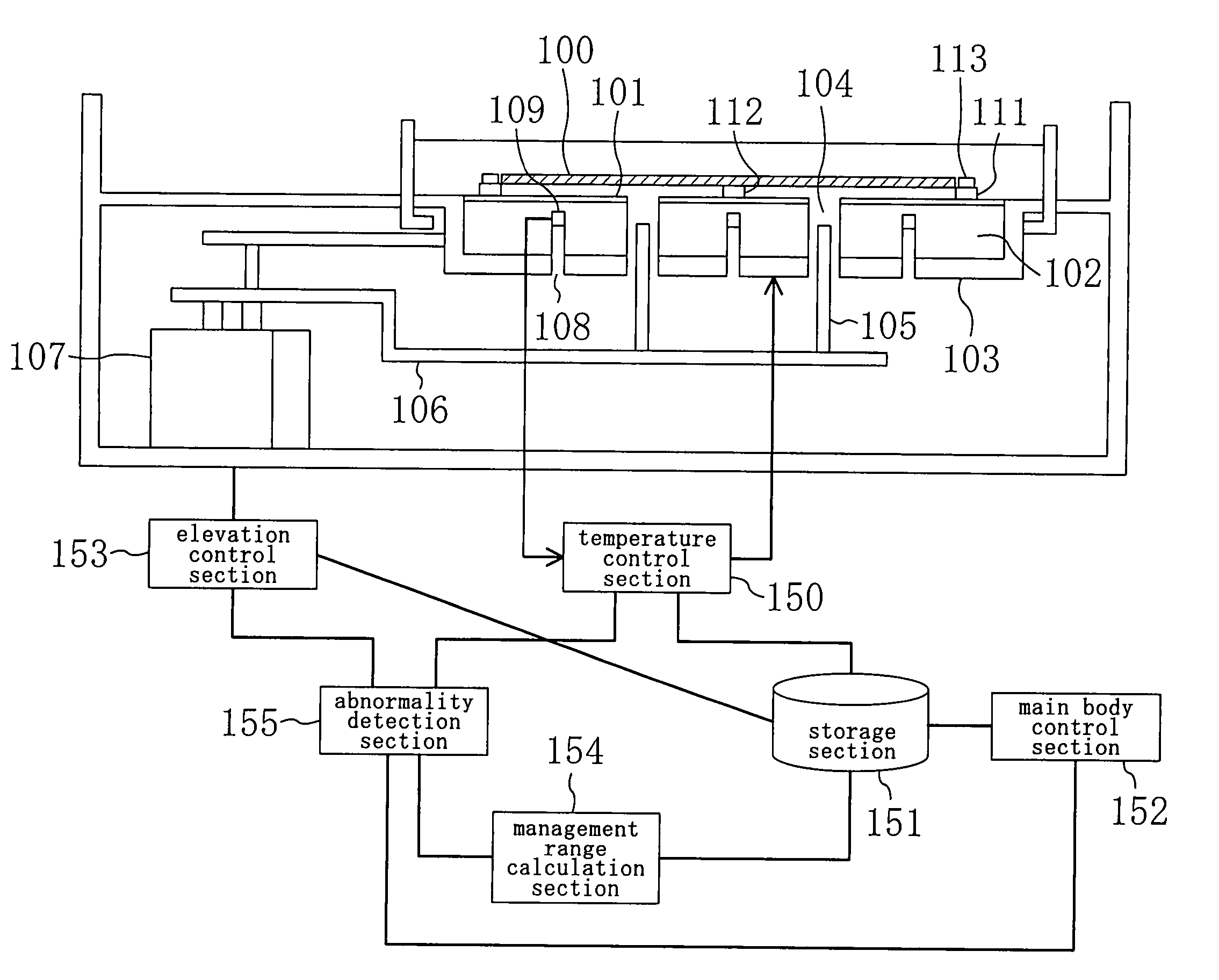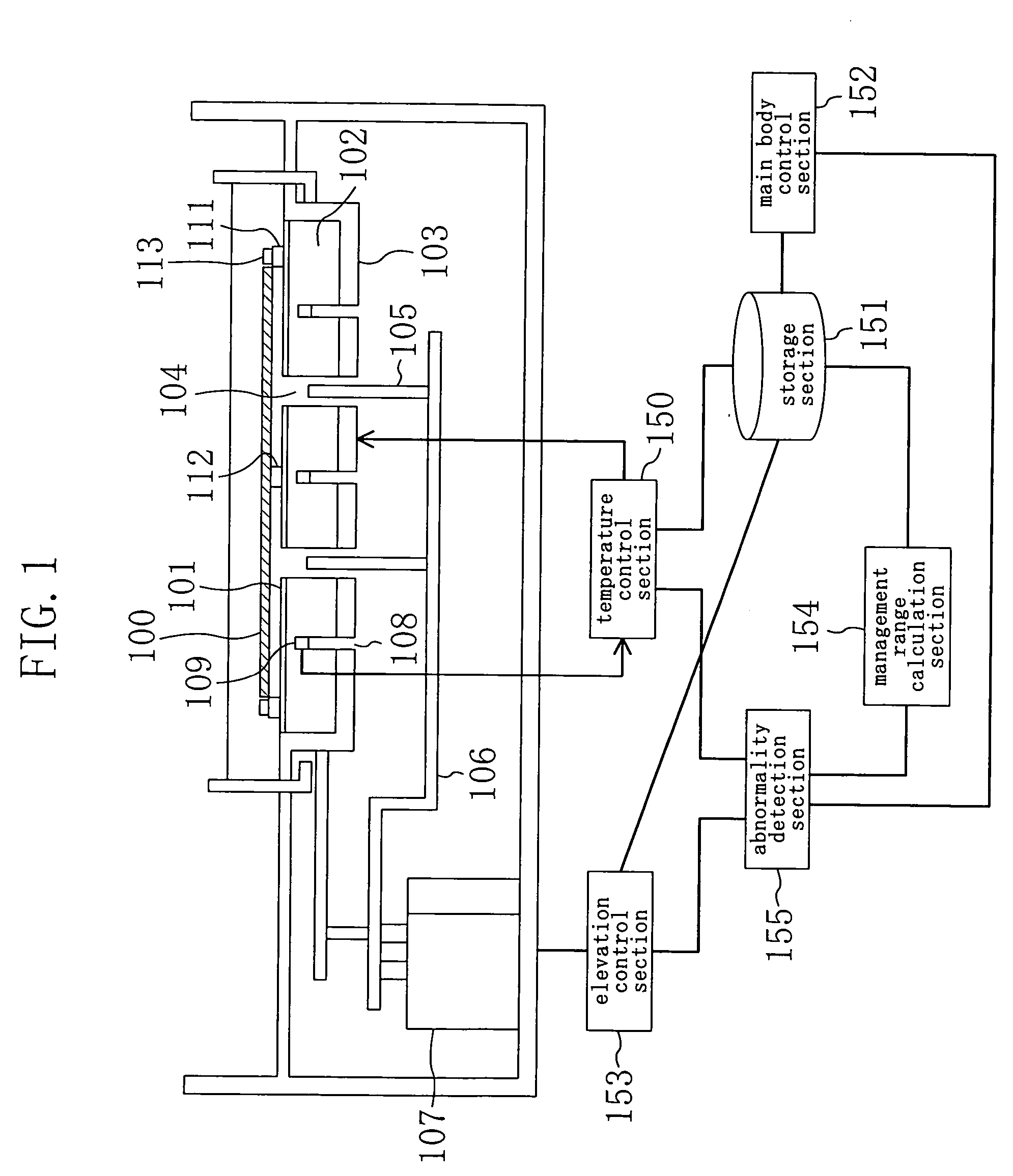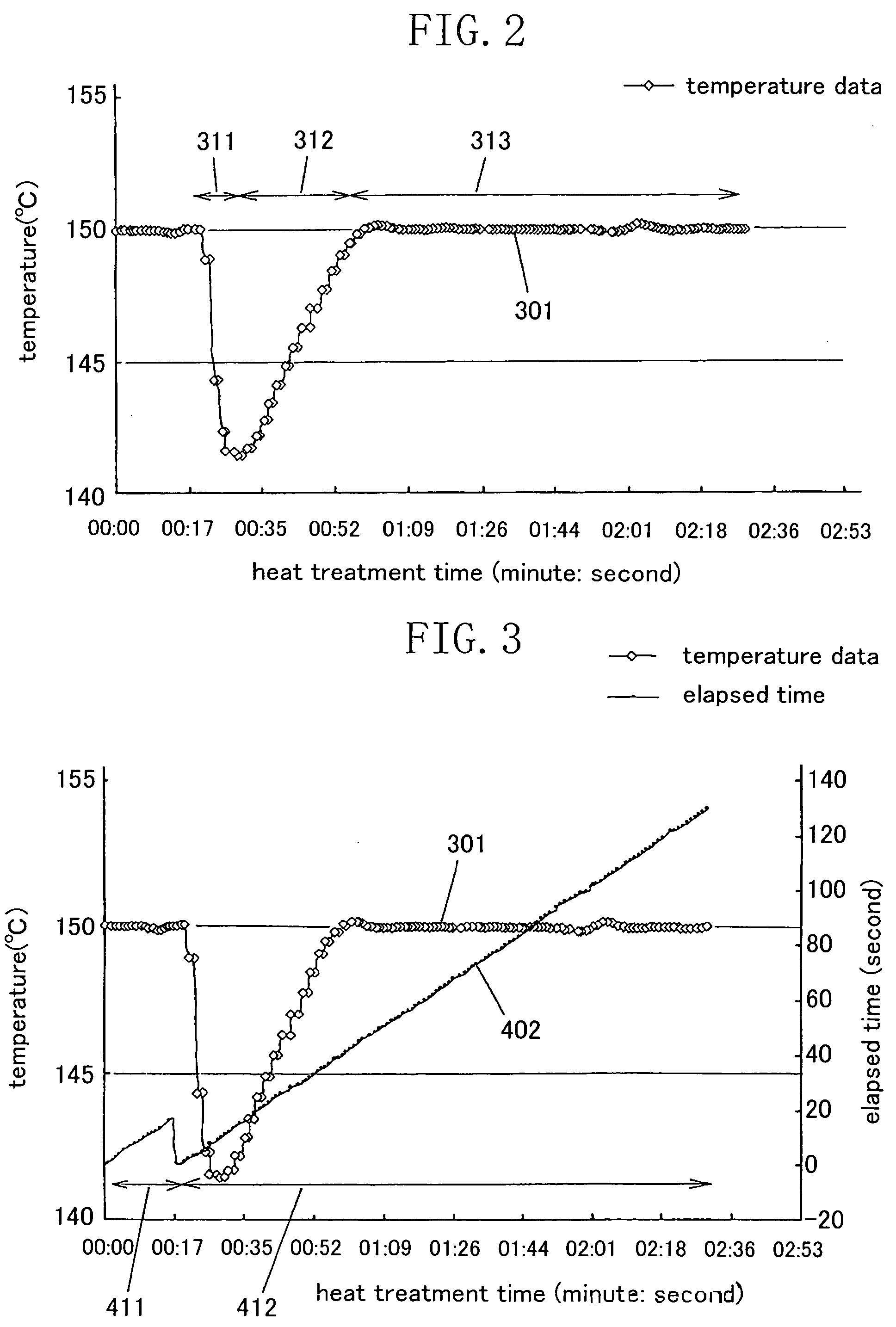Temperature abnormality detection method and semiconductor manufacturing apparatus
- Summary
- Abstract
- Description
- Claims
- Application Information
AI Technical Summary
Benefits of technology
Problems solved by technology
Method used
Image
Examples
Embodiment Construction
[0033] A method for detecting temperature abnormality and a semiconductor manufacturing apparatus according to one embodiment of the present invention will be descried below with reference to the accompanying drawings.
[0034]FIG. 1 is a view showing a schematic constitution of a semiconductor manufacturing apparatus (specifically, a heat treatment apparatus) according to the present embodiment. As shown in FIG. 1, a hot plate 101 as a processing plate for heat treating a wafer 100 as an article to be processed is provided at the substantial center of the heat treatment apparatus. The hot plate 101 is arranged on the obverse side of a circular holding plate 102 having a diameter, for example, slightly larger than the wafer 100. On the reverse side of the holding plate 102, a heating element 103 having, for example, substantially the same shape as that of the holding plate 102 is arranged so as to be adhered to the holding plate 102. The heating element 103 is composed of, for example...
PUM
 Login to View More
Login to View More Abstract
Description
Claims
Application Information
 Login to View More
Login to View More - R&D
- Intellectual Property
- Life Sciences
- Materials
- Tech Scout
- Unparalleled Data Quality
- Higher Quality Content
- 60% Fewer Hallucinations
Browse by: Latest US Patents, China's latest patents, Technical Efficacy Thesaurus, Application Domain, Technology Topic, Popular Technical Reports.
© 2025 PatSnap. All rights reserved.Legal|Privacy policy|Modern Slavery Act Transparency Statement|Sitemap|About US| Contact US: help@patsnap.com



